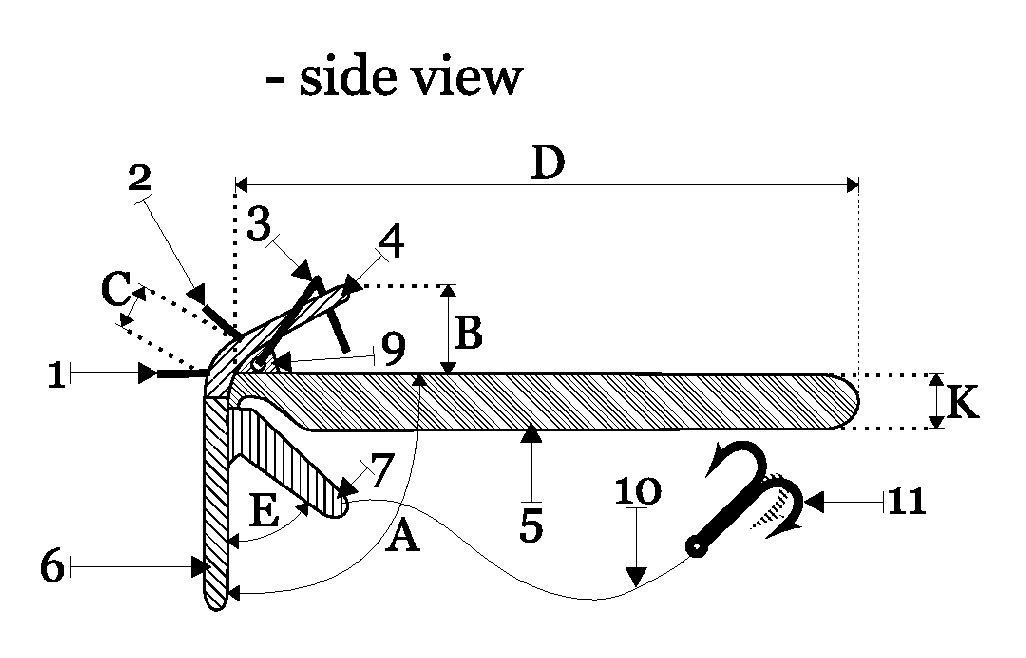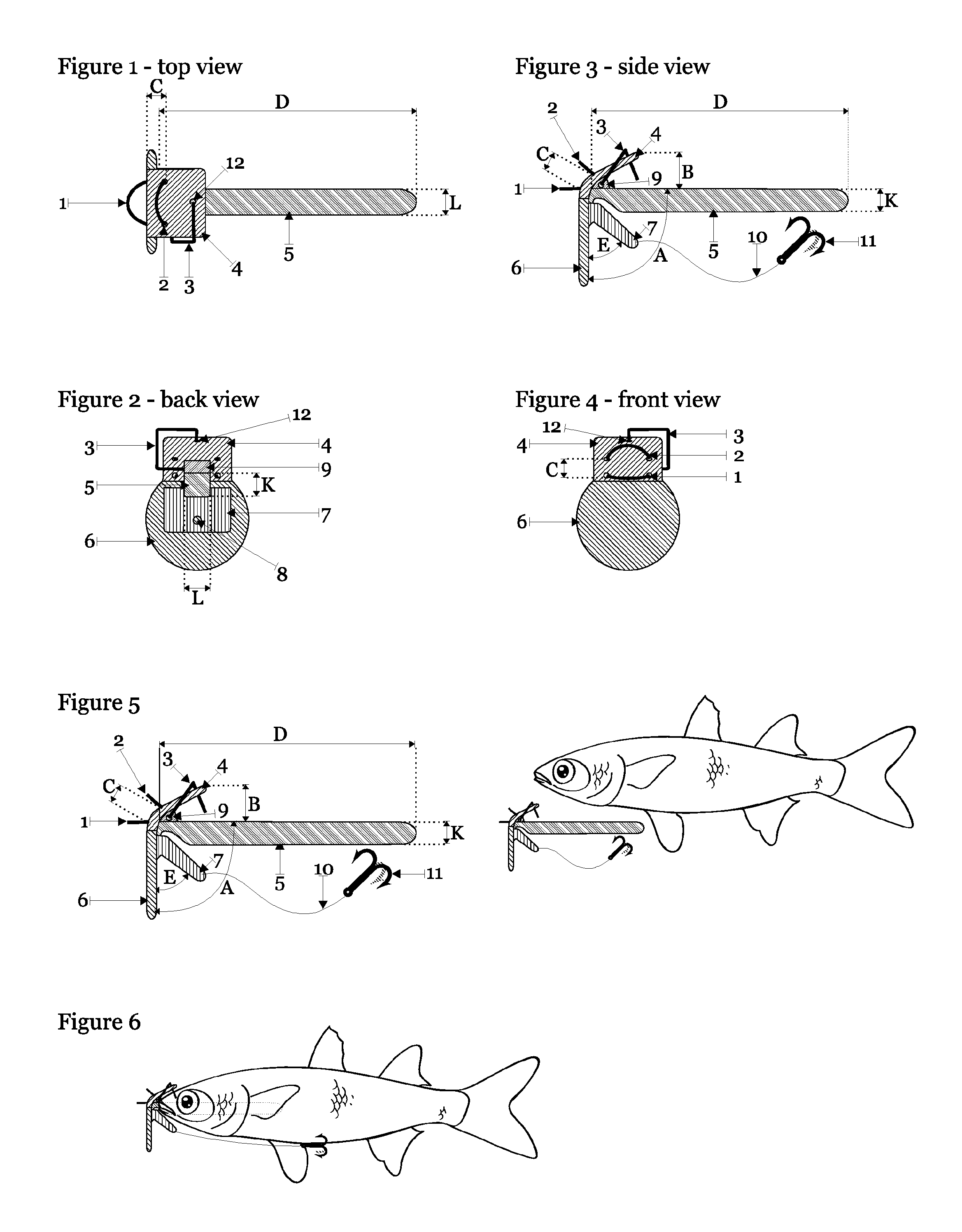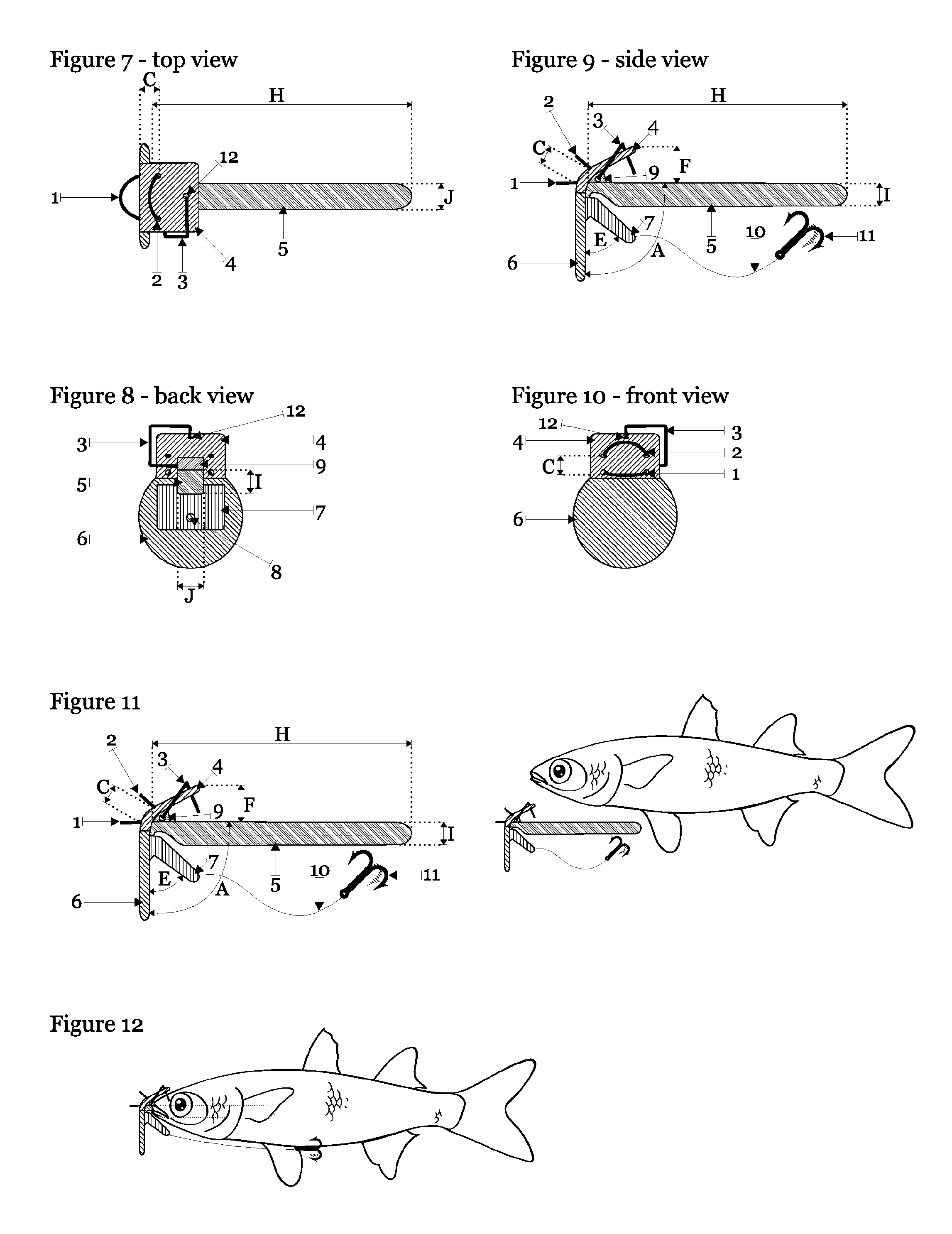Fishing lures
a technology of lures and lures, applied in the field of fishing lures, can solve the problems of difficulty, poor overall appearance of fish, and difficulty in trolling live baits, and achieve the effects of good structural strength, simple production, and preservation of the overall appearance of fish
- Summary
- Abstract
- Description
- Claims
- Application Information
AI Technical Summary
Benefits of technology
Problems solved by technology
Method used
Image
Examples
first embodiment
[0039]A first embodiment is described with reference to FIGS. 1 to 6.
[0040]FIGS. 1 to 4 show plan, rear elevation, side elevation and front elevations respectively of the first embodiment of a fishing lure. The fishing lure has a mounting body which comprises a first, upper, bar 4, a second, lower, bar 7, a rod 5 and a bill 6. The fishing lure is provided with a first eyelet 1 and a second eyelet 2, either of which may be attached to a fishing line for trolling the fishing lure from a boat. A hook 11 is mounted on a length of fishing line 10 attached to the lower bar 7 through an aperture 8. A fixing means in the form of a locking pin 3 is provided for fixing a dead bait fish on to the mounting body. The locking pin is rotatably mounted 9 on the mounting body to pass through an aperture 12 in the upper plate 4.
[0041]The elements of the mounting body are fixed together in use. In the arrangement shown, upper bar 4, lower bar 7, rod 5 and bill 6 are all moulded components. These are p...
third embodiment
[0056]a fishing lure is shown in FIGS. 13 to 18. These Figures again generally resemble FIGS. 1 to 6 respectively, and the reference numerals again correspond to those used in these earlier Figures.
[0057]In this arrangement, the arrangement of the bill and the lower bar has been somewhat changed, while the other components of the fishing lure (such as the rod 5 and the upper bar 4) are unaffected, save only in their connection to the bill or the lower bar in the intersection region. In this arrangement the bill is displaced some distance along the lower bar, and it is strictly the lower bar, rather than the bill, which abuts the fixed end of the upper bar 4. The lower bar and the bill can in this arrangement be considered as a composite lower element 13 in FIGS. 13 to 18.
[0058]The lower bar extends vertically in the intersection region to abut at its fixed end the fixed end of the upper bar 4. As it extends away from the intersection region, the lower bar is bent at an angle to the ...
PUM
 Login to View More
Login to View More Abstract
Description
Claims
Application Information
 Login to View More
Login to View More - R&D
- Intellectual Property
- Life Sciences
- Materials
- Tech Scout
- Unparalleled Data Quality
- Higher Quality Content
- 60% Fewer Hallucinations
Browse by: Latest US Patents, China's latest patents, Technical Efficacy Thesaurus, Application Domain, Technology Topic, Popular Technical Reports.
© 2025 PatSnap. All rights reserved.Legal|Privacy policy|Modern Slavery Act Transparency Statement|Sitemap|About US| Contact US: help@patsnap.com



